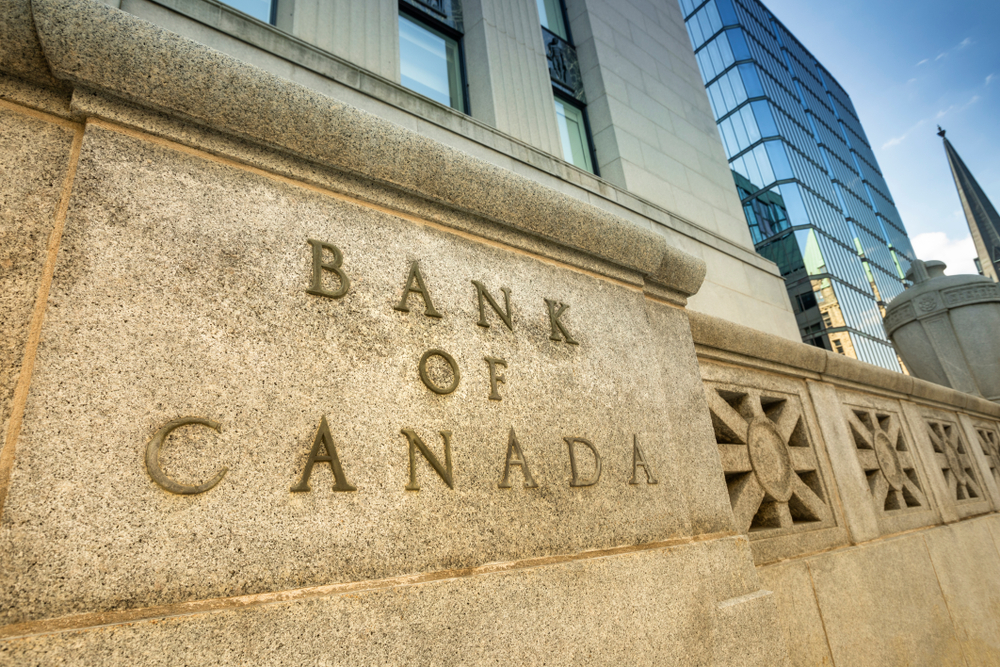
OTTAWA — The Bank of Canada left its key interest rate steady Wednesday as it looked to balance mounting evidence of a domestic economic pickup against the expanding risks of international trade conflicts.
The central bank kept its trend-setting rate at 1.75 per cent — and governor Stephen Poloz appeared to be in no hurry to make a move, even as he pointed to economic improvements at home.
The bank said in a statement that there’s “accumulating evidence” the economy has been re-emerging in the second quarter of this year following a period when economic growth nearly came to a halt.
“Overall, recent data have reinforced governing council’s view that the slowdown in late 2018 and early 2019 was temporary,” said the bank, which was widely expected to stick with a rate that’s been in place for seven months.
Several recent economic indicators have been unexpectedly robust.
The central bank said data has shown the oil sector is beginning to recover, the national housing market is stabilizing and job growth remains strong. The numbers, it added, also point to growth in consumer spending, exports and business investment.
However, the economy also faces expanding trade risks, the bank said, following the escalation of international conflicts and Chinese restrictions on Canadian goods that are already having “direct effects” on exports.
A bilateral diplomatic dispute that has festered for several months has led China to block some shipments of canola, pork and other products from Canada.
The trade dispute between the United States and China — the world’s two largest economies and Canada’s top two trading partners — could have a big effect on the Canadian economy.
Other details of Canada’s trade picture were seen as positives. The bank said the removal of steel and aluminum tariffs as well as encouraging signs the updated North American free trade agreement is moving closer to ratification will help Canadian exports and investment.
Taking these factors into consideration, the Bank of Canada said the current policy level is “appropriate.”
“Governing council will remain data dependent and especially attentive to developments in household spending, oil markets and the global trade environment,” the statement said.
The Bank of Canada has been cautious with the interest rate due to the accumulation of high levels of household debt, which has built up after years of very low borrowing costs.
Many experts expect the central bank to leave its key interest rate untouched until at least late in the year and perhaps longer. Some have predicted a rate cut will come before the next increase.
Frances Donald, head of macroeconomic strategy with Manulife Asset Management, said the bank appears increasingly optimistic about the economy at home. The biggest challenge right now, she added, is tied to all the uncertainty in the world economy.
“Those global trade concerns could derail the domestic economy in Canada,” said Donald, who expects the Bank of Canada to leave the interest rate unchanged until the international trade issues sort themselves out.
“The Bank of Canada, just like all economists, is wrestling what to do when the domestic economy looks much better, but the global economy looks worse.”
BMO chief economist Douglas Porter wrote in a report following Wednesday’s announcement that it seems like the bank has “settled in for a long pause” on the interest rate and “gave every indication that the bar is very high for a move in either direction.”
The next rate decision is scheduled for July 10, when the bank will also release its updated economic forecasts in its quarterly monetary policy report.
Canada will receive another important piece of information Friday with the release of its economic growth report for the first quarter.
Last month, the weaker economic data led Poloz to set aside talk of rate increases.
The sudden down shift over the winter — caused mostly by a drop in oil prices — forced the central bank to cut its 2019 growth forecast. The reduction came after the economy ran at close to full tilt for most of2017 and 2018 — a stretch that saw Poloz hike the interest rate five times.